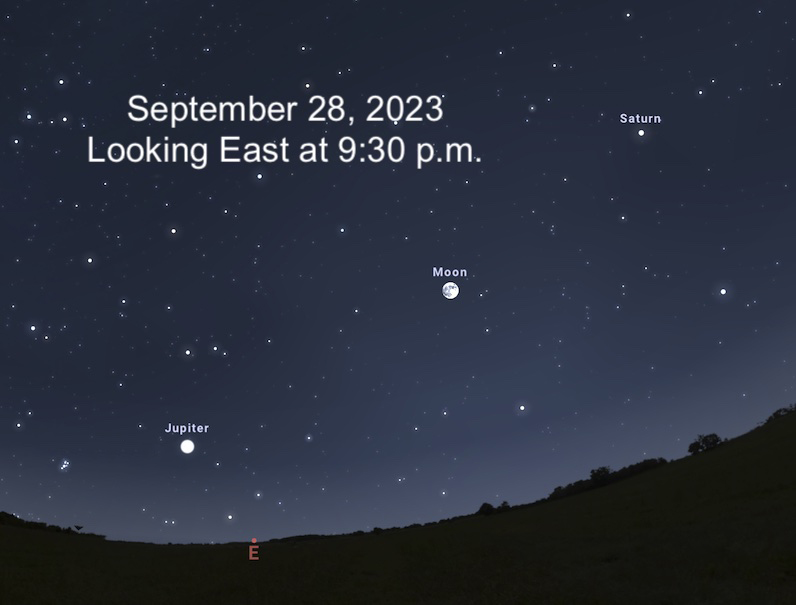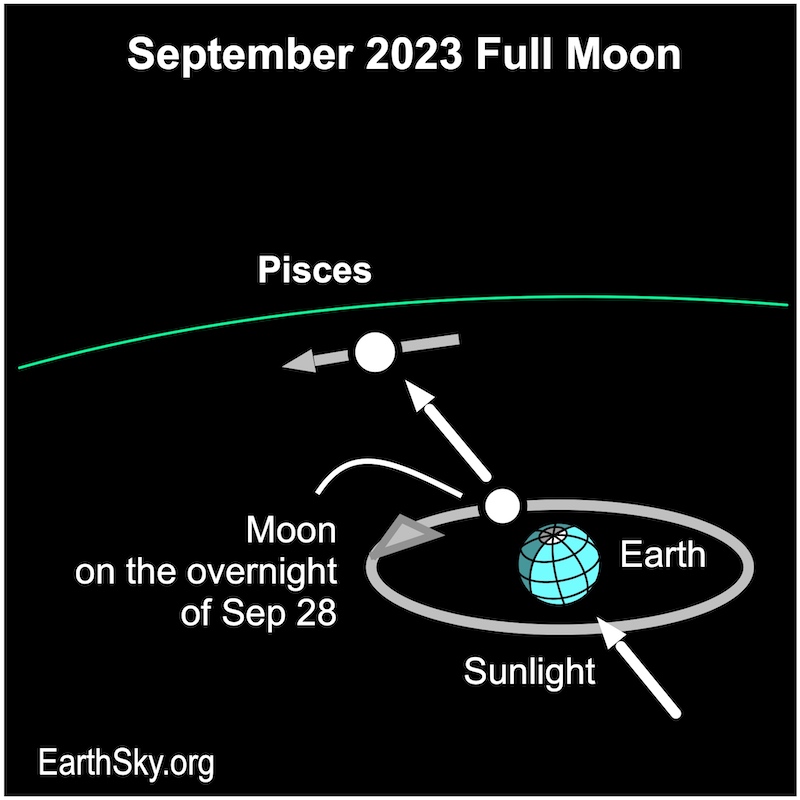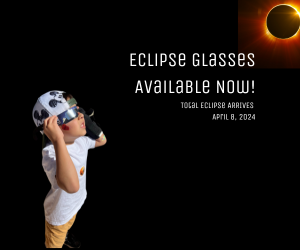
When and where to look in 2023: As seen from around the globe, look for the bright, round full supermoon rising in the east at sunset on September 28. It’ll glow highest in the sky near midnight, and drop low in the west before sunrise on September 29. This is the full moon closest to the equinox and so we call it a Harvest Moon.
Crest of the full moon falls at 9:57 UTC (4:57 a.m. CDT) on September 29, 2023. So many will say that the full moon – and the Harvest Moon – falls on September 29. That’s equally true and valid!
The 2023 super Harvest Moon will lie between two bright planets. Golden Saturn will rise over an hour before the full moon and travel ahead of it in the sky through the night. Our solar system’s largest planet, very bright Jupiter, will rise about 90 minutes after the moon. See the chart above. And check Stellarium.org for a precise view from your location.
Harvest Moon isn’t just a name. It denotes a time of year when the full moon – as seen from the Northern Hemisphere – has special characteristics. Find out more about the Harvest Moon below, or check out our video.
Harvest Moon is special
We in the Northern Hemisphere have long called the full moon closest to the September equinox by the name Harvest Moon. That name – Harvest Moon – might be the best known full moon name of the year. This year, the September equinox occurs at 6:50 UTC (1:50 a.m. CDT) on September 23, 2023. The full moon falls about six days later.
What’s special about a Harvest Moon? As seen across Earth, the moon on average rises about 50 minutes later each day, as it orbits Earth. But in mid-to-late September – for mid-latitudes in the Northern Hemisphere – that moonrise time drops to 20 minutes later each day around the time of full moon. The higher the latitude, the shorter the interval between successive moonrises.
September full moon and the ecliptic
Why? It’s because the ecliptic – or path of the sun, moon and planets across our sky – makes a narrow angle with the eastern horizon near sunset, around the time of the autumn equinox. For Northern Hemisphere observers, that means September or October. For Southern Hemisphere observers, it means March or April. The narrow angle of the ecliptic to the evening horizon – around the time of the autumn equinox – gives us the short interval between successive moonrises and the Harvest Moon.
Click here for a printable calendar showing the time of moonrise for your location
And a short interval between successive moonrises means that – for several evenings in a row, around the time of this September full moon – you’ll find a full or nearly full-looking moon low in the east in evening twilight. Before the days of electric lights, the early evening light of this full moon let farmers working in the fields have more time to work, before darkness settled. Hence, the name Harvest Moon.
And, by the way, for the Southern Hemisphere at this full moon, there’s a particularly long interval between successive moonrises!
It’s also a supermoon
Yes, the September full moon is another supermoon. As you might recall, the last three full moons were supermoons as well. In fact, the September Harvest Moon is the last of four supermoons in a row for 2023.
How close is it? The moon will be 224,658 miles (361,552 km) away. Comparatively, the average distance between Earth and the moon is 238,900 miles (384,472 km). So – while the September 28-29 full moon might not look bigger to the eye – it’ll surely look brighter than an average full moon.
And of course since it’s closer than usual it’ll also be pulling harder, via gravity, on Earth’s oceans. People who live near an ocean might notice particularly high tides in the day or so after this full moon.
September full moon lies in Pisces
The September Harvest full moon always lies in front of one of three constellations of the zodiac. Most years, it lies in Pisces the Fish, as it does this year. About every three years, though, it’ll lie in Aquarius the Water Bearer, as it did last year. Very infrequently – once about every 20 years – it’ll fall in the less-familiar constellation lying to their south, Cetus the Whale.

Bottom line: The Harvest Full Moon – and last of four full supermoons in 2023 – happens overnight on September 28-29, 2023, for us in the Americas. This full moon lies in front of the constellation Pisces. And it lies between two planets, very bright Jupiter and golden Saturn.

